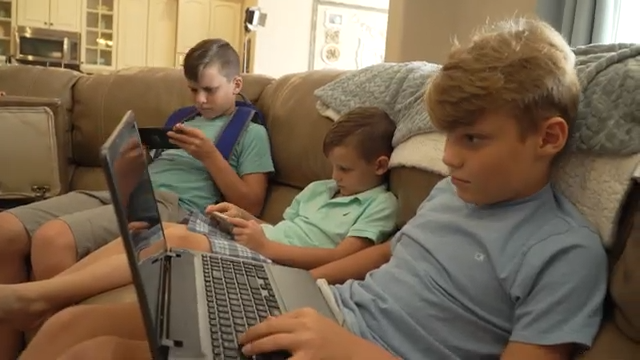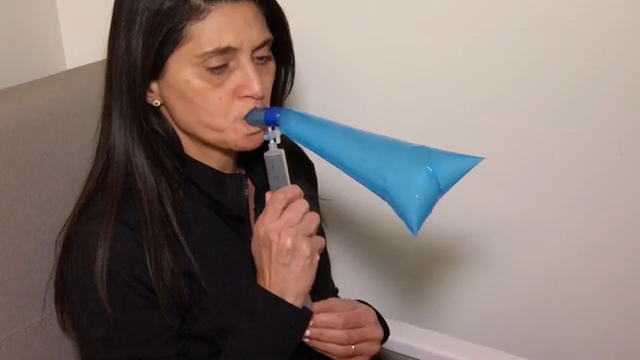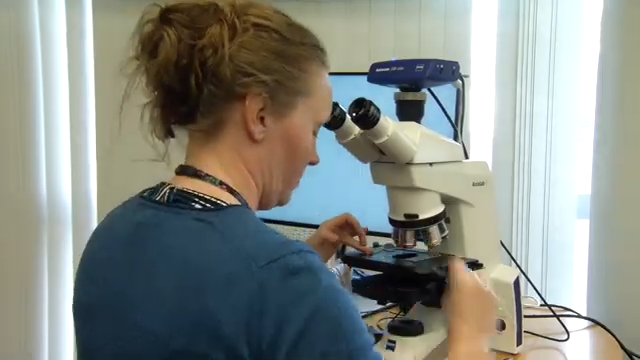HOUSTON, Texas (Ivanhoe Newswire) — Could you or a loved one be at risk of falling? According to the CDC, falling is the number one cause of accidental death in people over the age of 65. But now one scientist says she’s found a way to change that. Her company invented a bathroom scale that can measure someone’s risk of falling. And it all began as this researcher was shooting for the moon.
The Zibrio scale began here. Katharine Forth was a postdoctoral fellow at NASA when she created an algorithm to test the balance of astronauts.
Katharine Forth, PhD, Creator of Zibrio Smartscale at TMCx Houston said, “You have these lofty goals, you work towards them and then suddenly you have this miraculous invention.”
But her focus changed from outer space because of someone close to home. Her grandmother was 86 years old when she lost her balance and fell down the stairs.
Forth shared, “It was just so painful and sad to watch such an athletic, capable person suddenly be reduced to using a walker, being in a wheelchair and being in hospital with a broken hip.”
Forth realized that by quantifying someone’s balance, her algorithm could prevent falls like her grandmother’s.
“It’s sort of hidden data about yourself that is so important,” said Andrea Case-Rogers, CXO, from Zibrio: The Balance Company, TMCx Houston.
All someone has to do is stand on the scale for one minute. Then the Zibrio app will score their balance on a scale of one to ten.
Trauma surgeon John Holcomb, MD, from UT Houston says this could be a game changer to keep patients out of the emergency room.
Dr. Holcomb said, “The number one cause of admission into trauma centers across the United States and in every western country around the world are falls. Falls.”
For Forth, it’s a chance to protect those you love most.
She explained, “I just wanted to help lots of people out there so that this didn’t happen again because falling is preventable.”
The Zibrio smart scale will be commercially available this summer. The creators hope that checking someone’s “fall risk” will become a standard part of doctors’ visits.
Contributors to this news report include: Breanna Molloy, Field Producer; Wladimir Moquete, Videographer; Cyndy McGrath, Supervising Producer; Hayley Hudson, Assistant Producer; Robert Walko, Editor.
To receive a free weekly e-mail on Medical Breakthroughs from Ivanhoe, sign up at: http://www.ivanhoe.com/ftk
MEDICAL BREAKTHROUGHS
RESEARCH SUMMARY
TOPIC: SMART SCALE PREVENTS FALLS
REPORT: MB #4558
BACKGROUND: One in every five falls cause broken bones or head injury. They send three million older people to the emergency room, and kill over 27,000 people. Falls also lead to over 95 percent of hip fractures, and they are the most common cause of traumatic brain injuries. Falls are also the leading cause of death among older adults. Falls can happen due to lower body weakness, balance problems, home hazards such as steps or rugs, or a lack of vitamin D. Falling can cause physical decline, social isolation and depression.
(Source: https://www.cdc.gov/homeandrecreationalsafety/falls/adultfalls.html & https://www.ncoa.org/news/resources-for-reporters/get-the-facts/falls-prevention-facts/ )
PREVENTION: The first thing to do to prevent a fall is talk to your doctor. Learn about medication and the health conditions that could lead to a fall. Do strength and balance exercises such as tai chi and remove boxes, newspapers, and phone cards and other hazards that may be in your path. Also, add nonslip mats and rugs and wear stable shoes. Hold on to the rails when going on the stairs and repair any loose boards in the floor. And finally add brighter lighting in your house in order to see where you are going.
(Source: https://www.mayoclinic.org/healthy-lifestyle/healthy-aging/in-depth/fall-prevention/art-20047358 https://www.cdc.gov/homeandrecreationalsafety/falls/adultfalls.html)
NEW TECHNOLOGY: There are many ways to measure balance. There is the balance error scoring system, which uses a foam board to test six different positions. If you open your eyes, stumble and fall or lift your hands then you are given a point and then at the end the score is added together. For older adults, if you scored anywhere between a zero and a 23 then it puts you in the top 25 percent at least with the top 90 percent being from zero to 11. The Star Excursion Balance Test uses masking tape to test your balance on just one leg and pointing your other leg different directions. The highest scored positions were medial and posteromedial. There is a new study that has shown promise and does not require testing. The SmartScale looks at your balance by just having you step on it. You receive a score from one to ten based on your balance. One to three is poor and means a high risk of falling. Any score above seven equals good balance. The SmartScale also comes with an app called Balance Coach. It takes into account your last fall, weight, and guides you to new habits to help your improve your score. The app is available for Android and Apple and will be available in August.
(Source: https://us.humankinetics.com/blogs/excerpt/measure-balance-and-stability https://www.indiegogo.com/projects/zibrio-smartscale-measure-improve-your-balance#/)
FOR MORE INFORMATION ON THIS REPORT, PLEASE CONTACT:
Katherine Forth, CEO Zibrio
713-822-7799
If this story or any other Ivanhoe story has impacted your life or prompted you or someone you know to seek or change treatments, please let us know by contacting Marjorie Bekaert Thomas at mthomas@ivanhoe.com




